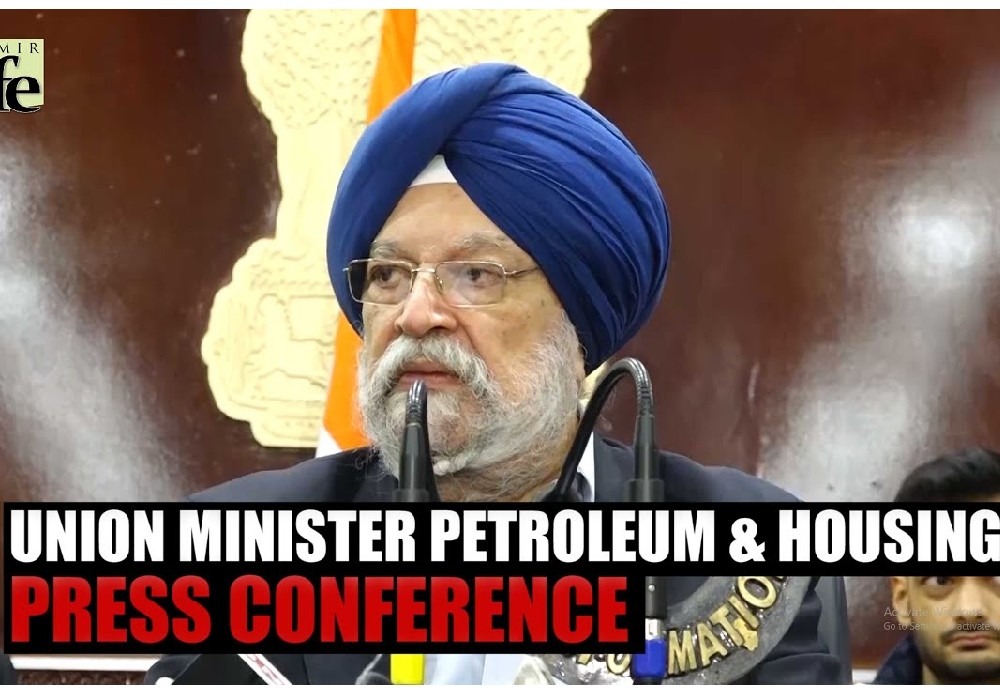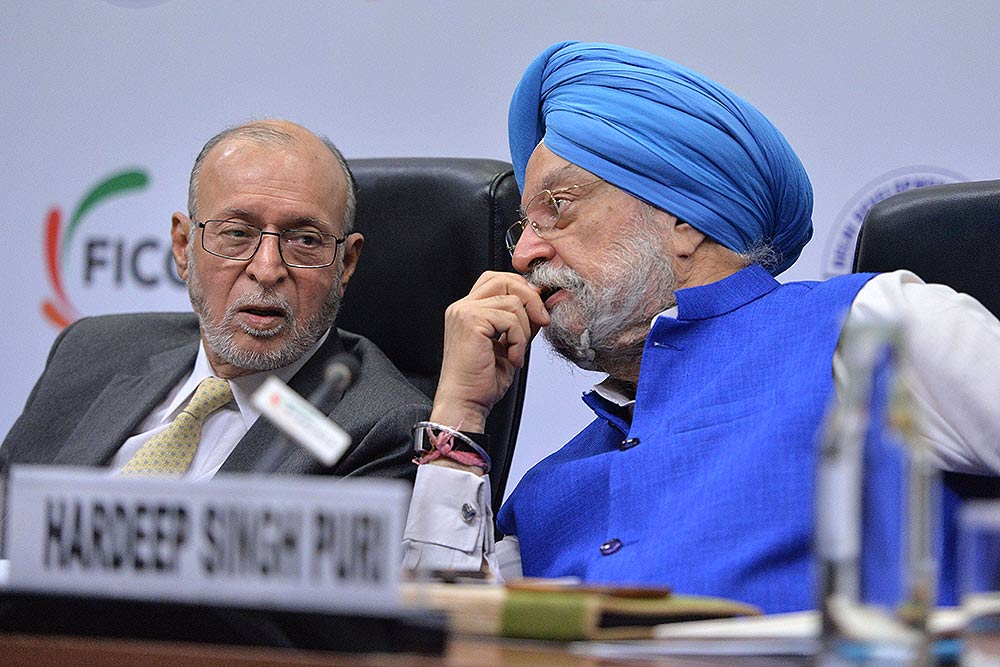Business travel has structurally changed: IndiGo CEO
United Airlines, Air Canada, US Airways, and Air Sahara were Ronojoy Dutta’s stamping grounds, before IndiGo. Since then, it hasn’t been clear blue skies for the man. He now sees tailwinds emerging.
United Airlines, Air Canada, US Airways, and Air Sahara were Ronojoy Dutta’s stamping grounds, before taking over as chief executive officer of InterGlobe Aviation, which owns IndiGo, in January 2019. Since then, it hasn’t been clear blue skies for the 68-year-old: the airline’s promoters fought and Covid-19 stalled air travel. But Dutta now sees tailwinds emerging. Edited excerpts.
THE COVID-19 DISRUPTION
Is the Indian aviation industry staring at a crisis as Covid-19 shows no signs of abating just yet?
When we started flying in May 1 we were not sure what to expect. We had these various scenarios [in mind]. One was very optimistic: that there would be a vaccine soon and there would be a very quick recovery. There was [also] a very pessimistic scenario: where there would be a second or third wave [of the pandemic] and people’s confidence in flying would be shattered. Fortunately, we see recovery happening; we have passed the crisis stage.
Part of the reason why [air] traffic in India has taken off is because people know air travel is safe. That customer confidence came back very quickly, and I have to thank both the government and our operations team for working so diligently on this by doing substantive things. We started with 25% of our pre-Covid-19 capacity and we have accelerated to 70%. That’s domestic. On the international front, because of the air bubbles and Vande Bharat flights, we are at about 20% of our pre-Covid-19 capacity. For domestic, we could get to 100% capacity by early 2021, while international is going to be a slower build-up.
What exactly was done to bring back customer confidence?
We made sure that the confidence levels of the early adapters [to air travel] were very high and that shows in all the surveys that we have taken. We met with a team of doctors from places like the All India Institute of Medical Sciences along with the government to know what is considered safe for air travel. First is air transmission; could it [Covid-19] be transmitted by air? Well, the HEPA (high-efficiency particulate air) filters [in the aircraft cabin air filtration systems] and the flow of air from up to down, instead of front to back, convinced doctors that air transmission risks are minimal. Next was surface contact.
We said we would deep clean our aircraft more frequently (there is a wipe down at every stop and we have increased ground times to ensure that). On top of that we said we will give each customer a sanitisation kit and face masks, obviously. Medical science says that wearing masks is like being seven feet away from one another. The final thing was what about people rubbing shoulders with each other, especially those seated in the middle? We said we shall keep the middle seat empty, but when the loads are high and the middle seat is full, then we shall ask the person sitting in the middle to wrap themselves in another layer of plastic. With all of that the doctors gave us a clean chit.
Image : Graphics by Chetan Singh
The fear is that the virus was spread through air travel and hence there is still reluctance among many passengers…
It came through air travel not because you picked it up on the airplane. If you’re coming out of Wuhan to Kerala, it’s coming via air travel but not being picked up on the airline. That’s the point. Our customer traffic numbers now are robust to a point that I think we are addressing that fear. It may not have gone away, but we are addressing that fear. 2 The statistics on flying are quite impressive. I think worldwide, there have been 44 cases reported on a base of 2.3 million passengers or something. So, airlines are truly safe. And in India, in particular, we have done a very good job in instilling this safety issue.
While we were meeting with the government, we were also meeting with all the major metro airports and worked with them very closely on congestion issues. Web check-in became mandatory and we have eliminated congestion at check-in counters at airports. At a couple of airports, we got complaints that the toilets weren’t cleaned. We tried first talking with the [authorities at the] airports, but then we said forget it. We got some of our own cleaners to clean these particular places. As an airline, safety is our No. 1 priority—not only flight safety, but also health safety. And we are taking it as seriously as we do flight safety.
Isn’t there a challenge when state governments impose travel restrictions?
It is and people hate confusion. Our bookings were going along nicely every day, but as soon as [the state government of] Maharashtra said you need to produce a certificate [for air travel], boom, our bookings softened. This sort of confusion is very bad for the industry. I’m hoping that when Mr. Puri [Hardeep Singh Puri, the minister of civil aviation] says that by January we shall be past all this, I’m hoping he’s accurate in his forecast. From everything that the government is saying, they want us [the industry] to get to 100% capacity by early this year. And this is supported by the traffic build-up that we are seeing.
2019 was also dramatic for IndiGo with its promoters Rahul Bhatia and Rakesh Gangwal sparring in the open. Have they resolved their differences? So, let’s say that the venue has shifted and it’s not an issue in the boardroom at all. We don’t talk about it and no one pays attention to it. It’s never referred to in any way. The venue has shifted to London, but I’m not sure exactly what’s happening there. IndiGo is party to it as a respondent; some lawyer writes to us and we respond. But it’s not in our consciousness.
The government has placed a cap on domestic airfares and capacity, which many analysts believe created a level playing field for the cash-rich and cash-strapped airlines. Was that a good move?
Initially, I’m guessing the government was also experimenting with what works and what doesn’t. And again, I can’t speak for them, but I’m speculating that they probably wanted to dampen the volatility a little. If you open up the whole system and have no boundaries in terms of prices, you can get into outlier situations. For example, what if there was panic at airports with many people showing up, social distancing went by the wayside, or fares spiked? By putting in some restrictions, I think they tried to dampen these volatile peaks. To that extent it worked. However, I also think very strenuously that it’s time to remove all those. We are operating with too many restrictions. We should get back to an open and free world as quickly as possible.
Business travel is still a major concern. Is there any clarity on when business travel would pick up?
Business travel is down, and I would say will continue to be down. Structurally it might have changed forever. People will rely more on Zoom calls and so forth. Within business travel there is corporate and SMEs (small and medium enterprises)—corporate travel has been hit, while SME travel is holding up pretty well. Besides, the VFR (visiting friends and relatives) travel is very strong. What is good for us is that the volumes at the bottom are so big that we can easily replace that [the loss in business travel].
Remember that in India only 5% of the population is used to air travel. 4 That is the lowest penetration in the world among middle-developed countries. If that number goes to 15%, you can imagine the surge in volumes; and every indication is that it will go to that. Then there is the question of ticket prices or yields. India has the lowest ticket prices in the world and IndiGo is partially responsible for that because we believe in affordable fares. As a result, yields can’t probably go much lower. And I’m not comparing ourselves to the U.S. or Europe, but comparing ourselves to Thailand and Indonesia. So, yields will also go up over time.
Business travel is down, and I would say will continue to be down. Structurally it might have changed forever. People will rely more on Zoom calls and so forth. Within business travel there is corporate and SMEs (small and medium enterprises)—corporate travel has been hit, while SME travel is holding up pretty well. Besides, the VFR (visiting friends and relatives) travel is very strong. What is good for us is that the volumes at the bottom are so big that we can easily replace that [the loss in business travel].
Ronojoy Dutta, CEO, InterGlobe Aviation.
Recently, someone I know travelled from Bengaluru to Kolkata. While the consensus was to fly IndiGo, the only advantage for the gentleman to take an Air India flight was that it offered 25 kg of free check-in baggage...
Absolutely! Well his 25 kg is coming at someone’s cost. Let’s say Air India was a profitable airline. Then I would say it’s coming at the cost of another flyer who is just going with his carry-on luggage, but is having to pay for a part of that 25 kg of check-in luggage. But in Air India’s case, of course, 25 kg is being paid by taxpayers’ money. That’s the difference. In our case, we are saying if you really need to carry 25 kg, by god, please carry it. But please also pay for it, and our price will be much lower than if you had shipped it.
Image : Graphics by Chetan Singh
THE NEW NORMAL
On the international front, do you think the government’s air bubble 5 arrangements with other countries is the new normal?
International travel will change pretty significantly. Part of the reason why Jet Airways and Air India struggled so much is because the [international] hubs around us were over-built. I’m talking about Bangkok, Singapore, Doha, and Dubai. They all had too much capacity and too much capacity carrying traffic out of India connecting to elsewhere. For example, U.S. to India. A lot of the U.S. traffic used to connect over Doha and Dubai. Now, Air India says it will fly non-stop between Bengaluru and San Francisco, and Hyderabad and Chicago; American Airlines says it will fly between Seattle and Bengaluru non-stop.
Suddenly, those wide-body aircraft (operated by Emirates and Qatar Airways) will not have enough passengers into India. In fact, there won’t be many widebody aircraft between Dubai and India because the connecting traffic has gone. I will make the same argument for Singapore and Bangkok as well. All around us, these hubs will have trouble justifying wide-body flights into India, which would benefit the narrow-body operators [like IndiGo] to these markets.
A number of Indian carriers are now offering non-stop flights between Indian cities and London. Does IndiGo have plans of flying to London?
Here is the problem with London: A large part of the revenue is point-of-sale London, it’s not point-of-sale India. That is true for overall revenues and for business [travel] revenues, that’s even more true. So, trying to tap into that traffic is not easy. Now, the reason why we say eventually we will do it is because clearly the India point-of-sale is growing. Not only is it growing, the business [travel] component of that is growing faster. Everyone would agree that at some point IndiGo should fly to London. I agree with that completely. But you have to make a distinction between an aspiration and a reality. It is an aspiration, and not yet a reality. We are getting these long-range airplanes (Airbus 321 XLR), which will take us to Milan and Barcelona, and places like that.
It has been stated that IndiGo would end FY21 with about 30% lower employee costs from the pre-Covid-19 levels. Fuel costs are also down. Have you reworked any other aspect of the business to keep costs down?
Fuel is the biggest part of our cost and, of course, fuel prices are down. But fuel burn rate is dependent on what type of aircraft you use. Over the next two years we will be sending back about a 100 of our old classic (Airbus 320 CEO) airplanes, 6 which are 15% more fuel inefficient as compared to the Airbus 320 NEOs.
Sending those back and replacing them with NEOs dwarfs any other cost element. Besides, we are either renegotiating with our vendors or giving back real estate. As we do more web check-ins, the question is do we need so many airport counters anymore? As we do more work from home, do we need as much office real estate? Similarly, we are trying to schedule our flights so that we spend less time at hotels—that is also a sort of real estate as in the nights the pilots or crew are using hotel rooms.
Do you agree or not that India seems to be the only country where airlines, which are technically bankrupt, go in for expansion?
Obviously, I can’t specifically answer the question. Ultimately economics wins; you can delay the ultimate reckoning. We are very focussed on basic economics and will stay focussed on that. I believe that everyone needs to focus on underlying economics—flights to London being a great example. Yes, we all have aspirations to go there, but do the economics make it work right now?

देश में एक करोड़ यात्री प्रतिदिन कर रहे हैं मेट्रो की सवारी: पुरी ..

Union Minister for Petroleum and Natural Gas and Housing and Urban Affairs, Hardeep Singh Puri addressing a press conference in ..

Joint Press Conference by Shri Hardeep Singh Puri & Dr Sudhanshu Trivedi at BJP HQ| LIVE | ISM MEDIA ..
(3).jpg)
"I wish a speedy recovery to former Prime Minister Dr Manmohan Singh Ji. God grant him good health," Puri wrote. ..